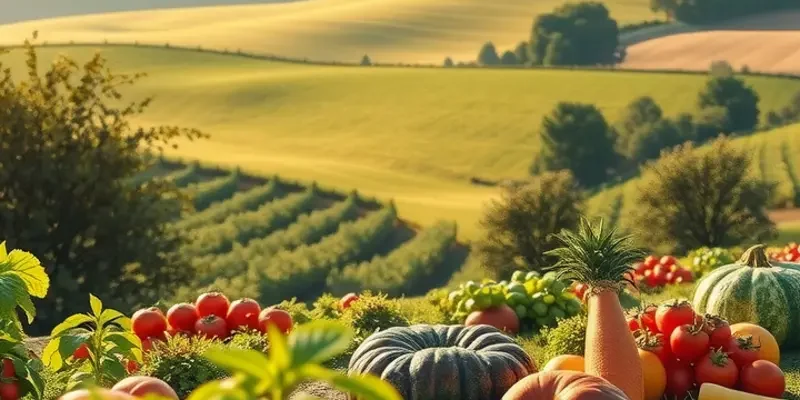Elevate your home cooking skills with easy food shaping techniques that enhance presentation and appeal. Whether you’re plating for a family dinner or hosting friends, learning to shape food can transform your meals into culinary works of art. This guide provides practical tips and techniques to help any home cook, regardless of experience, impress their guests and themselves.
Shaping Basics: Tools and Techniques

Achieving visually stunning dishes starts with mastering simple shaping techniques. With the right tools and a bit of patience, any home cook can elevate their presentation skills. From fruits and vegetables to proteins, understanding how to shape food can turn an ordinary meal into a feast for the eyes.
Essential Tools
To kick off your food shaping journey, you need a few key tools in your kitchen arsenal. First, invest in a variety of molds. These can range from round cookie cutters to more intricate silicone molds. They allow you to create uniform shapes with ease. Next, peelers and paring knives are crucial for shaping fruits and vegetables. A Y-peeler provides a comfortable grip for peeling thin strips, especially useful for garnishes. Paring knives, on the other hand, are ideal for carving detailed shapes.
Another must-have is the melon baller. It’s perfect for scooping balls from fruits like melons and even soft cheeses. For more intricate work, such as shaping chocolate or dough, a set of sculpting tools is invaluable. These tools, often borrowed from the world of pottery, help in creating fine details.
Basic Techniques
Now, let’s delve into some easy techniques that can be applied using these tools. Using Molds: Start with no-bake desserts like cheesecakes or cold appetizers like terrines. Simply press the mixture into a mold and chill. Once set, they pop out with clean lines and pleasing shapes.
Hand-Shaping: This technique is perfect for proteins. Flatten a chicken breast using cling film to ensure even thickness, then fold or roll as desired. For ground meats, practice forming perfect patties by lightly wetting your hands to prevent sticking.
For fruits and veggies, try the fan-shape method. Slice thinly, stagger the slices, and spread them out like a fan. This is particularly effective with avocados, apples, and cucumbers.
Practicing with Foundational Ingredients
Before tackling more complex dishes, practice with basic ingredients. Fruits like strawberries and kiwis are great for mastering hand-shaping due to their forgiving nature. Experimenting with these will help you gain confidence.
Vegetables such as carrots and cucumbers are ideal for sharpening your knife skills. Try creating ribbons or spirals to enhance your garnishing skills. Moving on to proteins, practice forming uniform shapes with minced meat or fish. By mastering the handling of these ingredients, you’ll build a foundation for more creative presentations.
For additional inspiration on crafting beautiful meals, consider exploring minimal prep dinner ideas to efficiently leverage your shaping skills.
Starting with these basic tools and techniques, you can transform your culinary creations into works of art. Remember, shaping food is not just about aesthetics; it reflects creativity and care in cooking, making every dish a delightful experience.
Plating Perfection: Presenting Your Creation

Creating visually stunning dishes is a journey that extends beyond the kitchen. To refine your plating skills, consider the harmony of color combinations. Use vibrant hues to capture attention, balancing these with softer shades to avoid overwhelming the senses. For example, a bright red pepper can accentuate a green salad, bringing life to the dish.
Height can also transform your food presentation. Incorporate vertical elements, like stacking layers of ingredients or adding a tall garnish, to create a sense of elegance and creativity. This adds dimension and ensures your dish stands out.
Arrangement strategies play a crucial role in plating perfection. People eat with their eyes first, so arranging components in an intentional, thoughtful manner is key. A helpful method is the clock-face technique: visualize your plate as a clock, placing proteins at 6 o’clock, starches at 2 o’clock, and vegetables at 10 o’clock.
Garnishes, when used effectively, enhance both appearance and flavor. Fresh herbs, edible flowers, or thinly sliced vegetables can add color and a hint of freshness to your plate. Remember, a garnish should always complement, not overwhelm, your main components.
An often-overlooked element is the importance of negative space. Leave some of the plate visible to provide contrast and focus for your dish. Crowding the plate can detract from the main ingredients and create a cluttered look. Allowing space gives the components room to “breathe,” making them more appetizing.
By mastering these plating techniques, you’ll find presenting your culinary creations both rewarding and enjoyable. By considering color, height, arrangement, garnishes, and negative space, you elevate your dishes to a memorable dining experience. For insights into simplifying your presentation, explore these minimal prep dinner ideas. You’ll discover opportunities to feature simple ingredients with remarkable presentation effects.
As culinary enthusiasts, embracing these methods transforms not only the visual appeal but also the overall dining experience, ensuring that your dishes not only taste phenomenal but also impress visually.
Final words
With these easy food shaping tips, you can take your home cooking to the next level, impressing family and friends alike. Remember, practice makes perfect, so try these techniques regularly and don’t hesitate to experiment. The more you play with shapes and presentation, the more confident you’ll become in your kitchen. Soon, you’ll not only create delicious meals but also visually stunning dishes that reflect your culinary skills. Happy cooking!







